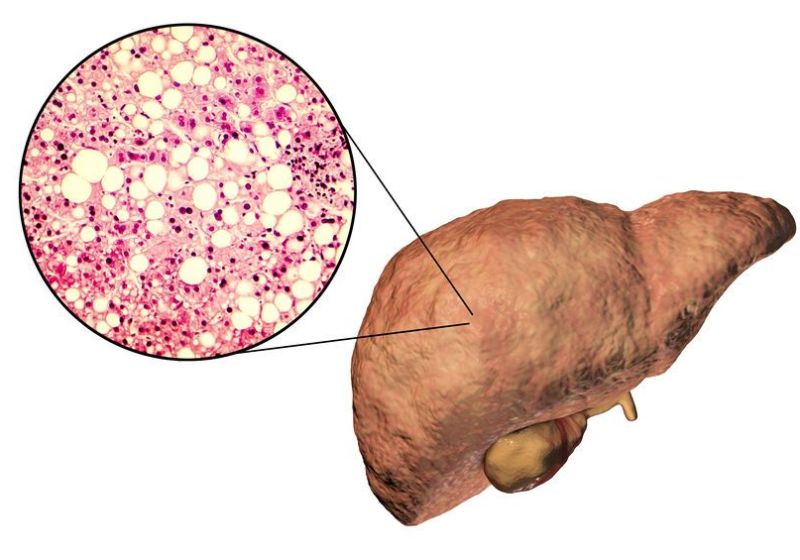There are many health risks associated with obesity, one of which is Non-Alcoholic Fatty Liver Disease, commonly abbreviated to NAFLD. This disease can go undetected for years, but can lead to devastating consequences for the body.
Read on to learn more about this disease, the signs and symptoms, and what you can do if you’re diagnosed with non-alcoholic fatty liver disease.
What is Non-Alcoholic Fatty Liver Disease?
If you have not heard of non-alcoholic fatty liver disease before, you may be surprised to learn that it is the most common liver disease in the United States. It’s estimated that 10 to 20 percent of adults in the country have a fatty liver.
A healthy, functioning liver has little to no fat stores. When it begins to acquire more fat, this leads to something called steatosis. This hallmark feature of NAFLD, occurs when the rate of hepatic fatty acid uptake from plasma and de novo fatty acid synthesis is greater than the rate of fatty acid oxidation and export. In simple terms, this means that fat is arriving in the liver at a faster rate than it takes to remove the fat from the liver, allowing for fat stores to build up. When someone has steatosis, they have NAFLD.
Non-Alcoholic Fatty Liver Disease Causes & Symptoms
Non-alcoholic fatty liver disease is most commonly caused by obesity. You’re also more likely to have NAFLD if you have type 2 diabetes, high blood pressure, or high cholesterol; all three of the aforementioned conditions are frequently associated with obesity.
NAFLD progresses slowly, and initially, it doesn’t have very many symptoms; many discover that they have NAFLD after undergoing medical examinations as opposed to experiencing any major symptoms. However, as the NAFLD progresses, symptoms can include pain in the upper right abdomen, exhaustion, and a jaundiced appearance.
However, non-alcoholic fatty liver disease isn’t something to ignore, as in its late stages, it can lead to the cirrhosis of the liver. During cirrhosis, the liver becomes smaller and develops scarring and lumping. Cirrhosis can lead to serious health problems, including liver cancer and liver failure, both of which can result in death.
How To Treat Fatty Liver Disease
It is important that, when diagnosed with non-alcoholic fatty liver disease, prompt action is taken to ensure that the disease doesn’t progress to the point of cirrhosis. There are no medical treatments or medications that specifically target NAFLD. The most effective treatment available is targeting obesity through weight loss.
The Weight Loss and Wellness Center can help you meet your weight loss goals and decrease the risk of health problems associated with non-alcoholic fatty liver disease. Dr. Majid and her team of experts provide you with years of expertise and create a weight loss plan that works for your specific needs and lifestyle, with the goal of you being able to live a happier healthier life. We offer New Jersey residents a large variety of weight loss options, from bariatric surgeries to non-surgical options, such as nutritional counselling and a weight loss support group. Let us help you find the weight loss solution that works for you.
Are you ready to begin your weight loss journey? Request a consultation with us today by clicking here or giving us a call at 1 (973) 888-1085.


